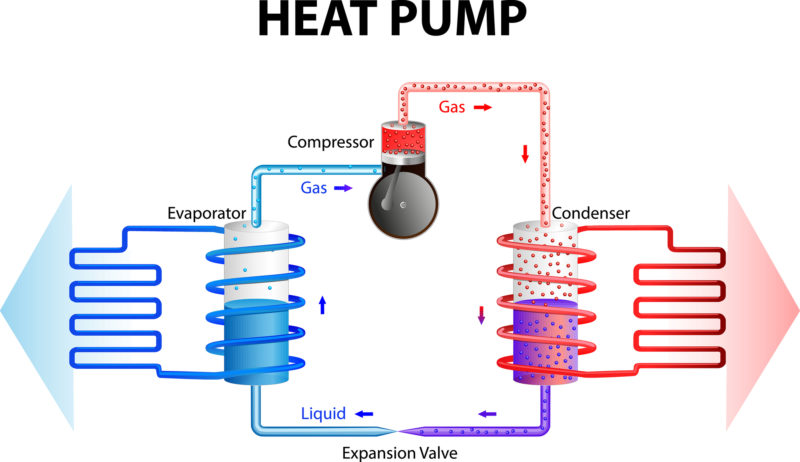Although we all associate an air conditioning device with summer and the freshness it provides, the truth is that an air conditioner with a heat pump can be most useful in winter. Winter can be one of the best times for the installation or replacement of your new or old heat pump, and to take advantage of it. Let’s see a few basic details regarding using a heat pump.
Heat pump: an inverter
Among its advantages, we can say that those that incorporate a heat pump have a good energy performance compared to other air conditioning systems. This is due to the fact that the energy obtained is much greater than that consumed in its operation. To assess the efficiency of a heat pump, its COP must be measured. For correct efficiency and functionality, a heat pump must reach a COP of between 2 and 6, depending on the difference between the temperatures of both sources. Besides, these inverter air conditioners have also improved over the years. In fact, they have managed to make them much less noisy than the first models.
When the cold is extreme
To function, the air conditioner uses its heat pump. In summer they are prepared to transform that hot air into cold while in winter they work in reverse. Its development even makes it possible to use this heat pump when the cold is extreme. Most of the air conditioners are prepared to work with up to 20 degrees below zero. But if we are thinking of installing it in places, such as Pacific Northwest where winter is extreme, it is recommended that we opt for models that works fine in these low temperatures.
As always, in all cases it is advisable to speak with an authorized installer. You can also ask for professional inspection services. If the machine has suffered from a lack of gas, the compressor may have seized when running without refrigerant. If the outdoor unit is placed higher than the indoor one, it is also usually a reason for the compressor to stop working since the oil it contains for lubrication tends to go to the lowest part of the circuit.
Hot focus (for heating)
Objective: To heat the refrigerant liquid by compression to send it inside. The circuit has a cooling liquid that absorbs heat. The steam passes through a compressor that increases its pressure and its temperature. The Compressor takes the fluid and compresses it causing its temperature to rise. This steam arrives with a great concentration of energy that gives up to the room.

